|
|
 |
 |
|
History
of Locko
Park and Hall |
Locko Park and Locko House stand on the site of a thirteenth century Lazarite leper hospital.
The name Locko is thought to derive from the Old French words
lognes (rags) and hay (enclosure). |
 |
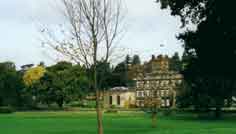 |
|
|
|
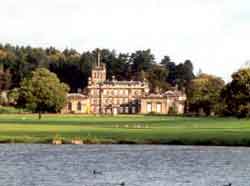 |
Locko's association with the Drury-Lowe family began in 1747 when
John Lowe bought the estate from the Gilbert family who owned the
first house to be built here.
A relative, William Drury, took
the name and arms of Lowe upon inheriting Locko in 1785. |
|
|
|
The West wing is older than the main
house, with the chapel incorporating part of the fabric of the old
leper hospital.
The main house, built around 1725, is nine bays wide and three stories
high, with rusticated giant pilasters at the angles |
 |
|
|
|
|
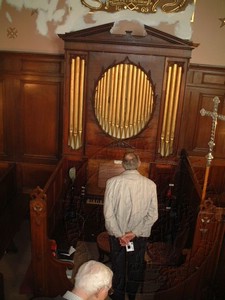 |
The chapel pre-dates the main house,
being built in 1669. It houses a Snetzler 4 stop chamber organ, made
in 1779 and brought from the music room in the East Wing.
This picture is by kind permission
of Ruth Sinclair from the Incorporated Society of Organ Builders
website -
http://www.isob.co.uk
|
|
|
|
|
The East wing was greatly added
to through the nineteenth century by Henry Stevens of Derby. This
included the addition of a new entrance porch, hall, dining room, billiards
room and a top-lit picture gallery, used to house the art collection
assembled by William Drury-Lowe (1803-1877) which he collected on
his European travels |
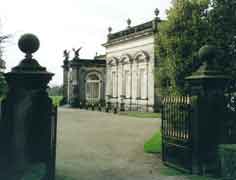 |
|
|
|
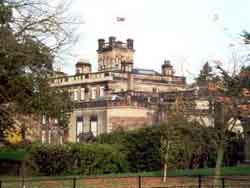 |
Other additions included a campanile
(bell tower) to the north west, a turret clock to the west of the
chapel, a Doric portico in the south front, a service court and
stable court to the north of the house and a mammoth glasshouse on
the kitchen garden terrace.
|
|
|
|
|
As well as being the home of
distinguished military men, Locko itself has military connections -
it was used as an armoury during the second world war and a Royal
Observer Corps nuclear fallout monitoring station was based in the
grounds until the late 1960's |
 |
|
|
|
 |
The three hundred acre park,
landscaped from 1792, is attributed to William Eames.
It
features a sixteen acre lake which today is home to a variety of
mallards, moorhens, greylags and Canadian geese, along with the odd
swan and a grey heron. Surrounded by farmland, the park is rich with
wildlife. |
|
|
|
With a bridlepath running through the
south and
east, the park is popular with walkers, cyclists and riders.
Although the house and grounds are private, they play host to a
number of events though the year, including live role play gaming in
the parkland in front of the house. |
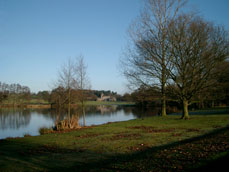 |
|
|
|
 |
The gardens are opened to the public
several times during the year, usually in support of charities.
As well as rose gardens with statues, there is a wonderful arboretum and terraced areas. |

|
 |
|
Locko Timeline |
|
|
|
|
1296 |
Leper hospital founded |
| |
|
|
1539 |
Hospital dissolved |
| |
|
|
17thC |
First house on site built for Gilbert family |
| |
|
|
1673 |
Chapel consecrated |
| |
|
|
1721 |
Estate sold to Robert Ferne |
| |
|
|
1725-1730 |
New house built for Ferne |
| |
|
|
1737? |
Ferne sells Locko back to Gilbert family |
| |
|
|
1747 |
John Lowe buys estate |
| |
|
|
1785 |
Estate passes to William Drury |
| |
|
|
1795 |
William becomes Sheriff of Derbyshire |
| |
|
|
1797 |
William becomes Deputy Lord Lieutenant of
Derbyshire |
| |
|
|
1800 |
William's daughter, Mary Anne, marries Captain
Robert Holden |
| |
|
|
1825 |
Daughter Sophia marries Alfred Curzon, son of Lord
Scarsdale of Kedleston |
| |
|
|
1827 |
Eldest son William Drury Holden marries Caroline
Curzon, Lord Scarsdale's youngest daughter |
| |
|
|
1835 |
Son Atkinson Alexander Holden becomes vicar of
Spondon |
| |
|
|
1849 |
William Drury Holden succeeds to the estate and
takes the name William Drury Lowe |
| |
|
|
1877 |
William Nathaniel Drury-Lowe succeeds and continues
alterations of the Hall |
| |
|
|
1906 |
Locko passes to eldest son William who is later
killed in action on the Somme |
| |
|
|
1916 |
John Drury-Lowe succeeds William |
| |
|
|
1949 |
John dies; his wife remains in the house until her
death in 1965 |
| |
|
1965 |
Patrick Drury-Lowe inherits the estate and
undertakes extensive restoration |
| |
|
1993 |
The
estate is inherited by Patrick Drury-Lowes daughter, Lucy Palmer |
|